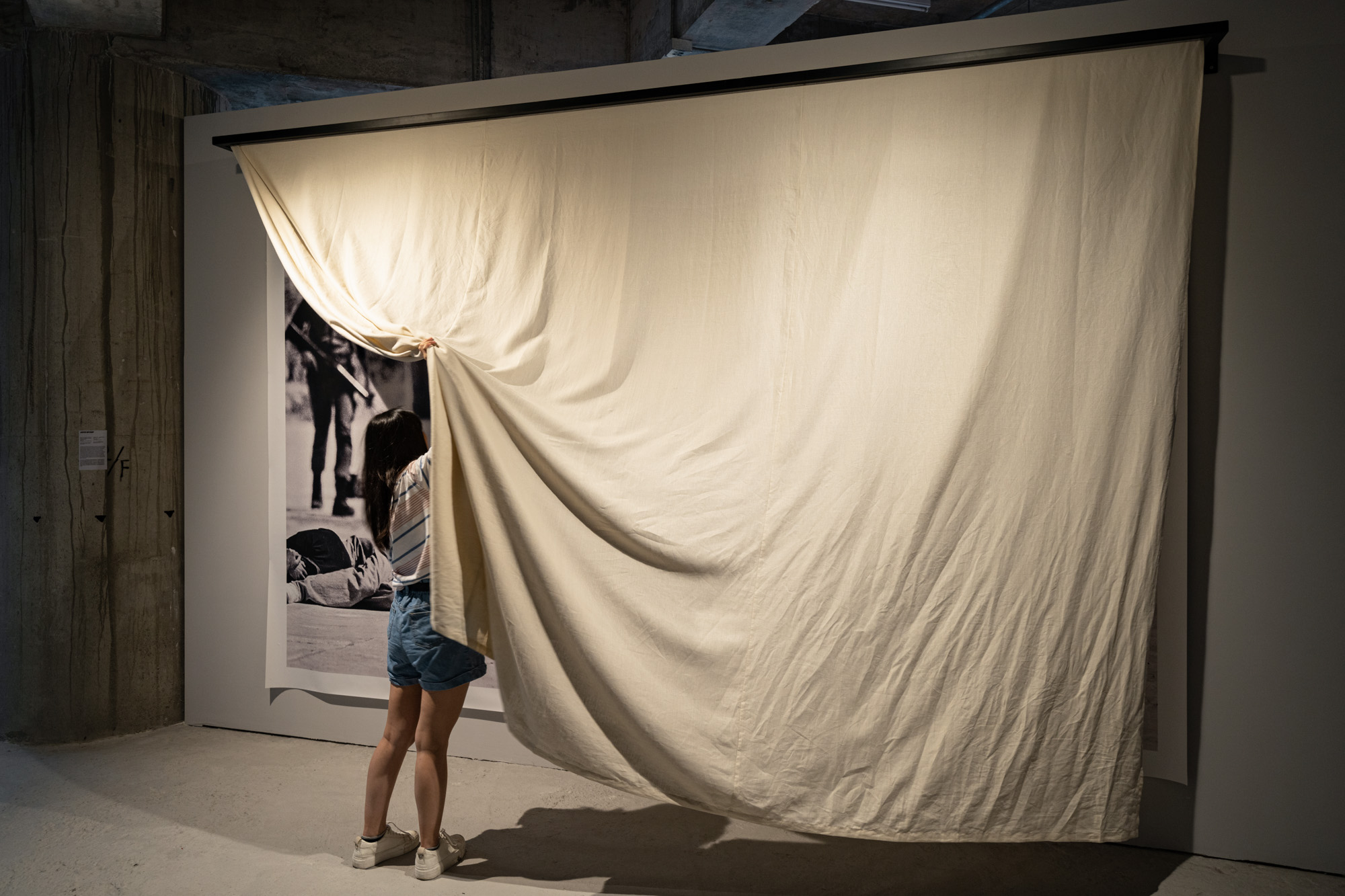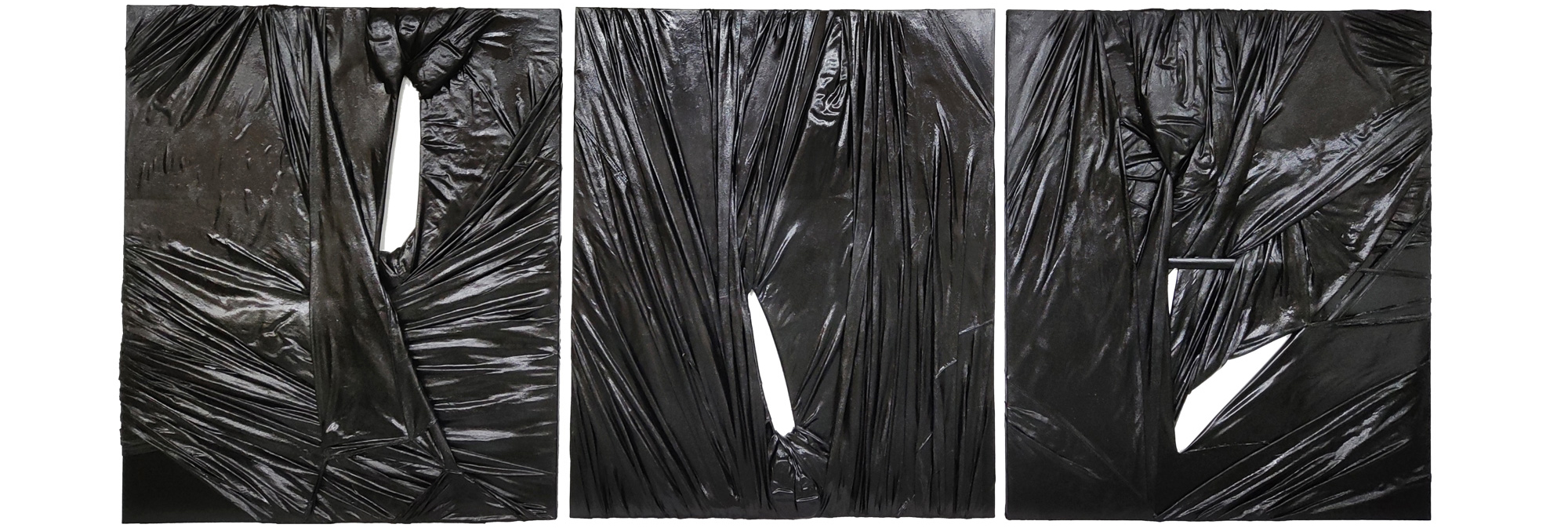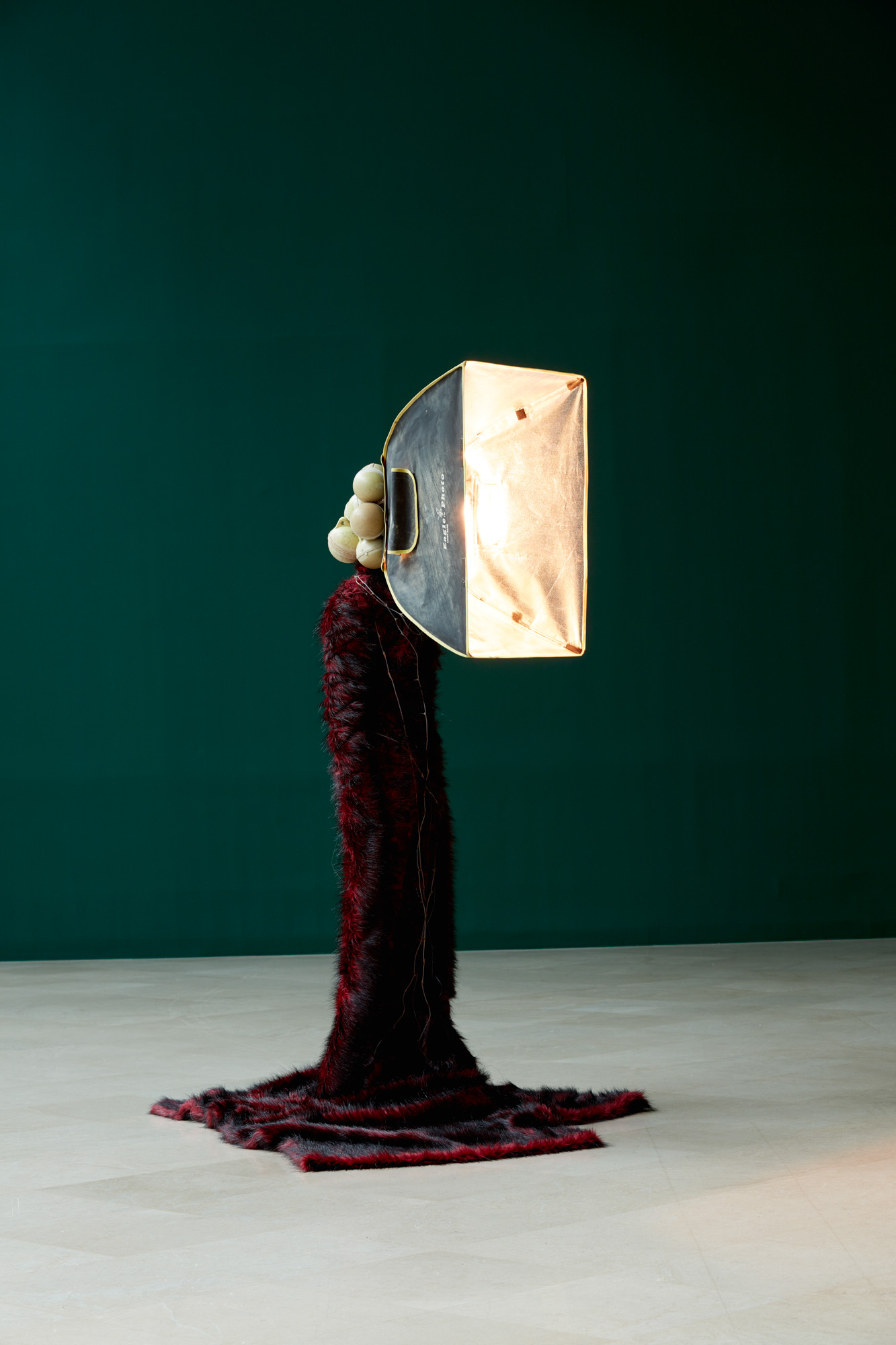Para Site’s Threadbare “Curtain”
By Gabrielle Tse

Installation view of GUSTAV METZGER
Composed as variations on a theme, “Curtain,” a collaborative exhibition organized by Hong Kong-based Para Site and Shanghai’s Rockbund Art Museum, brought together divergent works that were more or less related to the titular object. Featuring works by 24 artists at Para Site and Soho House, the show interrogated a curtain’s capacity to frame, divide, and obscure.
The strongest works married the fabric’s physical form and symbolic potential, such as Stella Zhang’s 0-Viewpoint series (2015–16), which was displayed in both spaces. Zhang’s works are composed of layered black cloths stretched violently across the canvas. In spite of their latex-like sheen, the fabric, like skin, has an organic suppleness; the narrow slit in each canvas thus recalls a wound, suggesting both agony and vulnerability. Upon closer viewing, the folded cloth forms also resemble female genitalia. This disturbing series expresses how women’s bodies are often reduced not only to objects of desire, but also to sites of violence.

STELLA ZHONG, 0-Viewpoint-8-1, 2, and 3, 2015, mixed media, 109 × 84 cm. Courtesy the artist and Galerie du Monde, Hong Kong.
Also drawing attention to veiled violence was Gustav Metzger’s To Walk Into—Massacre on the Mount, Jerusalem, 8 November 1990 (1996/2021). The installation at Soho House involves a linen curtain covering a blown-up black-and-white photo from 1990 of bodies at Temple Mount in Jerusalem, where Israeli security forces had opened fire on Palestinian civilians amid violent clashes. By forcing viewers to uncover and confront the image nose-to-nose, To Walk Into counteracts a passive, spectatorial consumption of violence. At the same time, the curtain functions as a tool of concealment, perhaps gesturing to the way that unsuspecting people can walk past horrors hidden in plain sight due to individual ignorance, if not outright censorship.

MINOUK LIM, Antigone, 2015, FRP mannequin, faux fur, steel stand plate, reflector, buoy, infrared lamp, thorn, latex cord, Arduino relay device, 220 × 228 × 125 cm. Courtesy the artist and Tina Kim Gallery, New York.
However, the thematic connections were less clear in works that did not formally involve curtains, as in Minouk Lim’s Antigone (2015). The haughty, red-robed figure with an infrared lamp for a head and a necklace of thorns appears to fix a cyclops-like gaze on her surroundings at Soho House. Antigone was inspired by a South Korean television program that reunited families separated by conflict. According to the artist, people would flock to the broadcasting studio clutching mementos, hoping to identify or be identified by missing loved ones. Antigone’s lamp mimics harsh studio lights, and its spindly necklace perhaps alludes to the keepsakes of the desperate. But how did the sculpture fit in the context of the exhibition? The catalogue takes the broad definition of a curtain as “a mutable concept used to contemplate questions of visibility and invisibility related to surveillance, forgotten histories, and geopolitical delineations,” but lacking further justification for their inclusion, works like Antigone only diffused the exhibition’s focus.
Another example was Robel Temesgen’s satirical Addis Newspaper—The Chinese Issue—January 2050 (2014), a fictional newspaper hailing from a future where China’s “One Belt One Road” initiative has evolved into galactic proportions. Making no attempt to hide its biases, the propaganda outlet heaps praises on “One Planet One Orbit” plans while sidestepping issues like resource exploitation. To explain the work’s relevance to “Curtain,” the catalogue posed the feeble argument that newspapers and curtains both “cloak the dissemination of information.”
This is not to say that the works without literal curtains at the exhibition were not interesting or memorable in themselves, only that the central concept was stretched and not always convincingly. The scattershot selection was compounded by the use of two separate venues, which added to the impression of disjuncture. “Curtain” was beautiful in parts, but its fabric was somewhat threadbare.
Gabrielle Tse is an editorial intern at ArtAsiaPacific
“Curtain” was on view at Para Site and Soho House, Hong Kong, from May 15 to July 25, 2021.
To read more of ArtAsiaPacific’s articles, visit our Digital Library.








